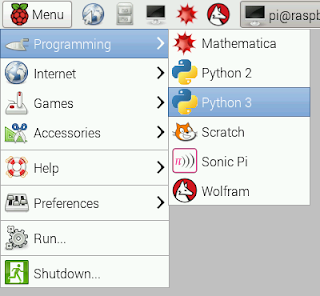Flashing Your SD Card
If you bought your Raspberry Pi as kit, it likely will come with an SD card that has already been flashed with NOOBS (you can also buy them separately for fairly cheap pre-installed with NOOBS, ~$9 on Amazon). If this is the case, then you can ignore this section. However, if you just have a blank SD card that you plan on using, or if you are a more advanced user and want a particular distro of Linux, then this is a step you'll need to complete.
To do this, all you'll need is another computer that has an SD card reader. You can follow the directions below depending on if you're using Windows, Mac OS, or Linux:
https://www.raspberrypi.org/documentation/installation/installing-images/
What is 'NOOBS'
NOOBS stands for "New Out Of Box Software" -- It is a very easy-to-use installation manager for installing your operating system. When you boot your Raspberry Pi up for the first time (after your SD card has been flashed), you should see this installation manager pop up (image below)
There are a few key things that I want to point out on this screen before you click "Install" ...
Different Linux Distros
In Linux, you can choose from a wide range of distros (short for distributions). The easiest analogy I can think of for understanding what a distro is, is ice cream. Say that Linux is ice cream -- the distros would represent all the different flavors of ice cream. All ice cream in the end is still ice cream, however, it takes different ingredients to make the different flavors and achieve different tastes. In Linux, all distros are still Linux at their core, but they are made differently and for different purposes.
With NOOBS, we have the choice of installing the following Operating Systems:
- Raspbian
- Pidora
- LibreELEC
- OSMC
- RISC OS
- Arch Linux

Rasbian
The most popular and most recommended Linux distro to use on the Raspberry Pi is Raspbian. This comes from the Linux distro Debian (Debian, Raspbian -- Notice that they sound kind of alike!), but has been tweaked and changed to work better for the Raspberry Pi. Raspbian is great because it doesn't just install a basic OS, it also installs software and packages, such as Minecraft, IDLE, PyGames, and so on. If you are just beginning, this is a great place to start.

Pidora
Pidora, much like Raspbian, comes from another Linux distro that has been tweaked for the Raspberry Pi. Instead of Debian, however, this comes from the distro Fedora (Pidora, Fedora -- Notice that they sound kind of alike!).
These are the main two you'll likely be using, but if you're interested in the others that are listed, I've provided links to their information pages below:
LibreELEC
OSMC
RISC OS
Arch Linux
Language
The other thing I want to point out on this screen is the Language setting -- Since Rasperry Pi is from the UK, this will default to "English(UK)" and the keyboard will default to "gb" (which stands for Great Britain). If you're in the US, this could pose a problem! You might think there would be no difference here, since both speak English (even though the other spells things a bit funny), but the keyboard layouts are ever-so-slightly different in the UK vs. the US. To save yourself a headache later and avoid little annoyances like finding the # symbol, make sure to change this to the appropriate keyboard you're using before hitting install.
Time to Install
Once you have chosen your desired Linux distro and changed the language/keyboard, go ahead and hit "Install" at the top left. You'll immediately be brought to a loading screen that will tell you the progress of the install. Once its done, you'll be asked to re-boot and your operating system should now be installed and working!
Pay attention to the fun facts that they have on the load screen for the install -- They give out helpful information about your Rasperry Pi -- Including what your login and password are! (HINT: login = pi and password = raspberry)
If you have any trouble, or have further questions on installing operating systems on your Raspberry Pi, feel free to shoot me an email or leave your questions in the comments.






